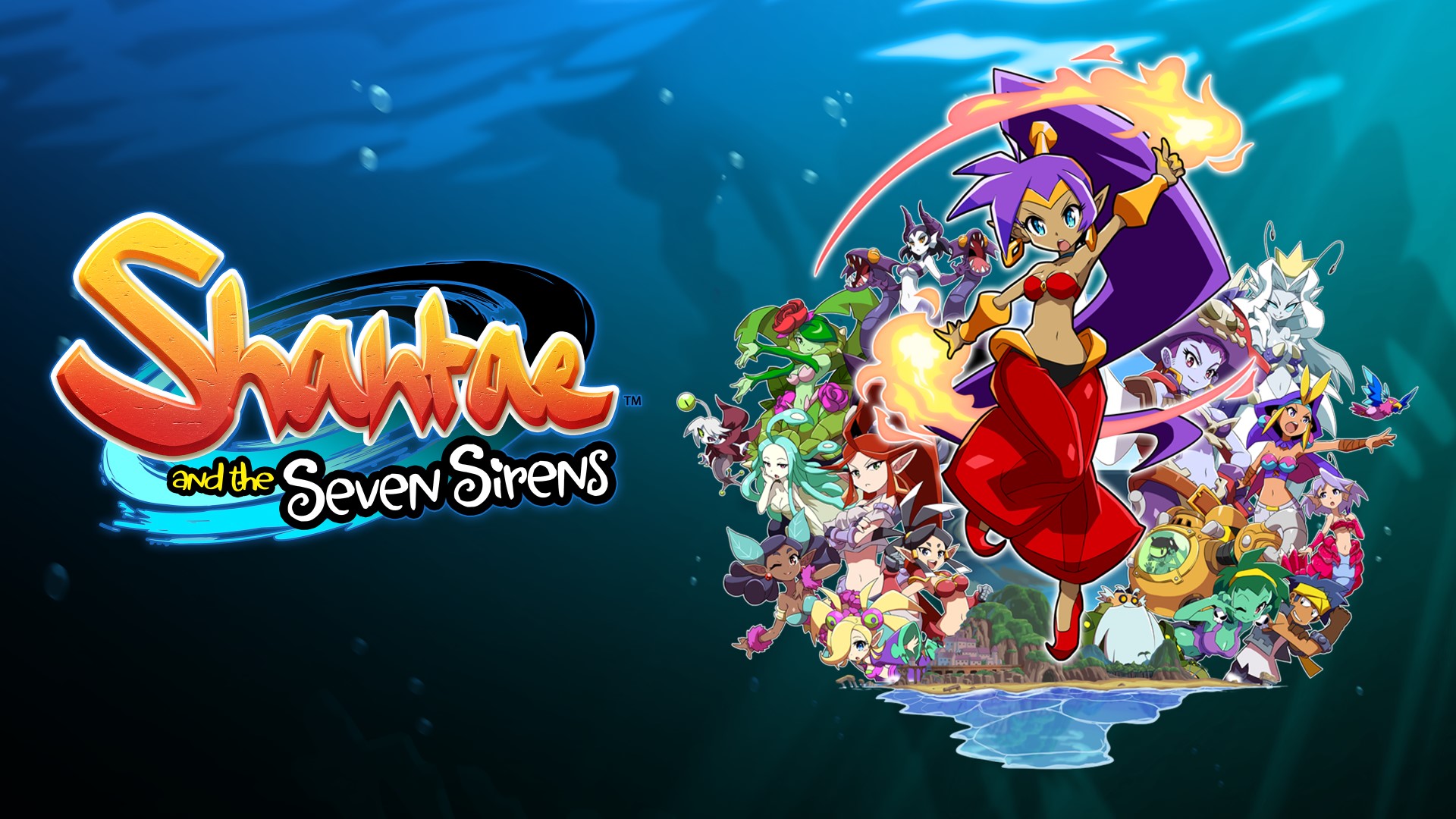Everyone’s favorite half-genie is back with a new adventure that keeps what fans loved about the last game and adds a few new magic tricks of its own.
Shantae’s back, and she’s wiggling up more action in WayForward’s latest side-scrolling adventure, Shantae and the Seven Sirens. This time, the adorable half-genie is trapped on a tropical resort island after nefarious unknown forces kidnap a group of her half-genie friends.
It’s as good an excuse as any to get back to Shantae’s colorful and whimsical adventures, with enough changes since her last outing, Half-Genie Hero, to feel fresh.
As ever, Shantae uses both her hair and dance magic to dispatch enemies and solve puzzles. Half-Genie Hero uses a world map that offered a variety of specifically-themed worlds, each with their Metroidvania-style sub-maps, and Seven Sirens takes a more straightforward approach. There’s one central location here — the island — with one large map divided into specific areas.
Shantae and the Seven Sirens Review: Half-Genie Magic
In practice, the map is not a huge change from the previous game, but it does make it more convenient to get around. One immediately noticeable change from the rest of the series is the fully animated, musical opening. The game also has short animated intros for each of the Siren bosses, and it’s a nice touch. Beyond that, Seven Sirens doesn’t look noticeably different than Half-Genie Hero.
That’s not necessarily a bad thing (the graphics are still excellent), but some stylistic changes in the overall look would’ve helped give the sequel a more distinctive personality.
Seven Sirens adds a new element to Shantae’s usual animal-transformation magic. Called “fusion magic,” she can acquire special powers from each half-genie she rescues. As with most games of this style, those powers are essentially gate keys to reach new, previously inaccessible areas. The first such power Shantae acquires, for instance, makes invisible objects and secrets appear. This includes platforms that let her climb to new heights.
Another power heals both Shantae and things around here, like dying plants. A third produces a surge of electricity that can power dead machinery (and hurt any enemies on screen). She even gains the ability to cause earthquakes that can move blocks and other objects.
To perform any of these feats, Shantae first starts her basic dance, followed by a quick tap on the appropriate button. Since a big part of all of Shantae’s adventures is finding all the hidden treasures, using every power on any given room can often result in several secrets revealing themselves.
In addition to her new fusion magic, Shantae also gets new, streamlined transformation powers. Where previously, she had to use her dance magic to transform, now Shantae can change form with the press of a button — even when moving. Her newt dash allows her to cling to walls rapidly, but it also lets her extend her jumping distance and damages any enemy in the way. Pressing down in water instantly invokes her sea frog form and also leads to some amusing retro-styled challenges.
Finally, Shantae can upgrade her hair whip and acquire different attacks by purchasing them at shops. Homing rockets, fireballs, bouncing balls of death, and spinning blades (along with a protective shield) can be switched on the fly and upgraded to even greater effect. So, while you’ll probably still spend most of your time whipping bad guys with Shantae’s hair, there’s still a surprisingly eclectic array of choice in Seven Sirens.
The island itself is quite large, with several different towns and a variety of different environments. Since the theme is tropical, there’s a heavy emphasis on beaches, tropical forests, caves, and the ocean. Shantae doesn’t just stick to the surface of the island, though; she also goes deep below the water to discover who took her friends and uncover the secrets of an ancient, very steampunk lost city.
Seven Sirens also feels a lot more straightforward than Half-Genie Hero, which at times leaves players with few clues of where to go next. Seven Sirens is breezier and more forgiving than expected, right up to the final area. At that point, the difficulty level spikes thanks to a brutal sequence where Shantae must defeat room after room of spawning monsters with a painfully tight time limit.
The load times for the Switch version are also noticeably long (and frequent), and, owing to its hardware, it also lacks the 4K graphics of more powerful platforms.
Shantae and the Seven Sirens review — The Bottom Line
Pros
- Large, secret-filled map
- More streamlined magic system is fun and creative
- Bright, colorful graphics
- Excellent and fun platforming action
Cons
- Most of the game feels a tad easy — until it isn’t
- Noticeable loading times
There’s not much more to complain about here. Shantae and the Seven Sirens brings back a favorite side-scrolling character in fine form. It’s a bright, colorful, cheerfully silly adventure with hours of exploratory, hair whipping, jumping fun.
Shantae has been weaving her magic for nearly 20 years and still feels distinctive amidst the sea of other platformers. Her latest romp might not feel quite as fresh as Half-Genie Hero, but it’s still a worthwhile, highly entertaining adventure.
[Note: A copy of Shantae and the Seven Sirens was provided by WayForward for the purpose of this review.]










Published: Jun 7, 2020 08:13 pm